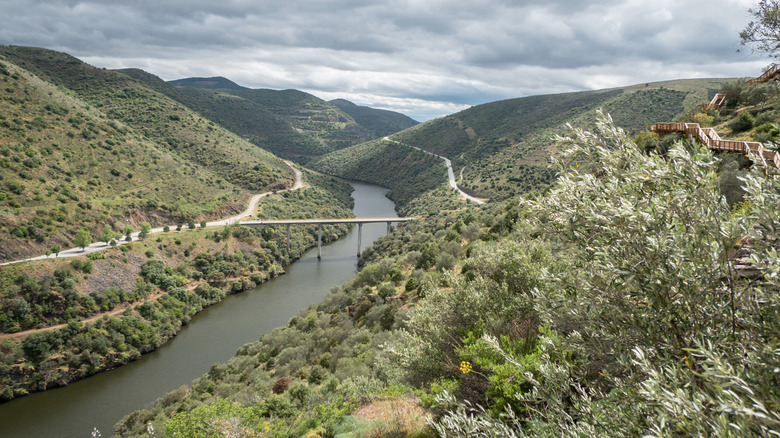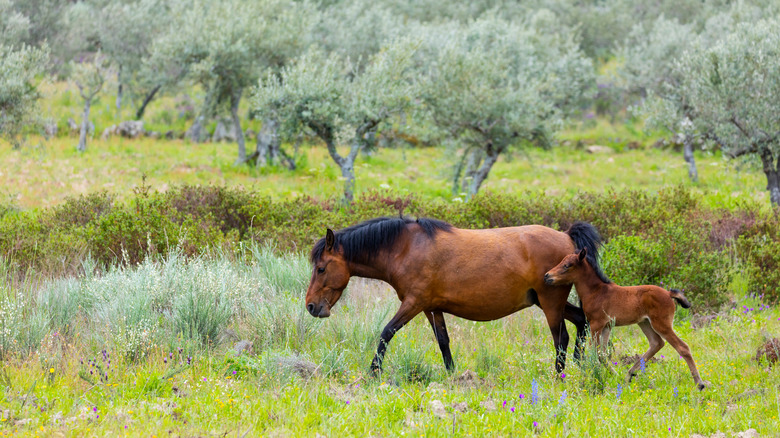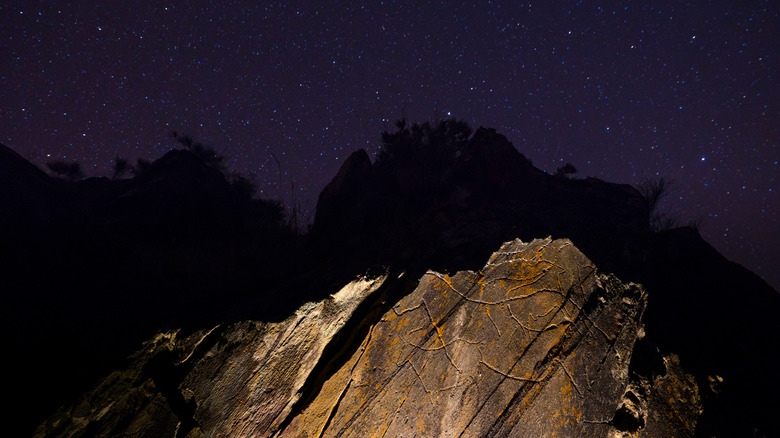This Rarely-Visited Portuguese Region Is Known For Its Gorgeous Wild Landscapes And Prehistoric Relics
Portugal isn't short on chart-topping attractions. Visitors flock here by the thousands each year to enjoy postcard-worthy beaches like Praia da Marinha in the sun-kissed Algarve, surf some of the best waves Europe has to offer, and explore fairytale towns like Aveiro — the list goes on and on. But while the crowds stick to the sands and the cities, there's a wilder, lesser-known side to the country, and the Greater Côa Valley is a prime example.
To get here, you'll need to leave behind the popular shoreline and the bustling streets of Lisbon and head right up to the far northeastern edge of the nation. That's where the Greater Côa Valley makes its home, at the tail end of the famous and historic Douro Valley wine region, just shy of the Spanish border. The nearest major airport is in Porto, and the drive takes around 2.5 hours, going deep inland through swathes of undulating vineyards.
Most traces of humankind will drop away as you arrive, for the Greater Côa Valley is emerging as one of the centers of the rewilding movement in Portugal. The area is being established as an important link in a network of wildlife corridors that span the whole Iberian Peninsula, and there's a special focus on the conservation of major species such as wolves and raptors. Perhaps the most intriguing reminders of civilization are a series of Paleolithic carvings left by people as far back as 24,000 years ago!
The stunning wild landscapes of the Greater Côa Valley
The Greater Côa Valley isn't the Portugal you've seen in the travel brochures. There are no golden, sandy beaches here or bar-filled cities with cobbled squares and impressive statues. Instead, the region, which links the Malcata Mountains that rise on the Spain-Portugal border with the well-known Douro Valley, is a patchwork of oak forests, riverside grass meadows, acorn woods, and craggy rock formations.
The Greater Côa Valley was once cultivated by olive growers and other smallholders, but their farms have gradually been abandoned, leaving an opportunity for the whole place to be returned to nature. In a 2023 interview with The Guardian, Pedro Prata, a team leader at Rewilding Portugal, said, "By acquiring and rewilding the farmland, and reintroducing large herbivores like the tauros to create a mosaic landscape, we can help biodiversity, prevent wildfires ... and give people reason to stay longer."
Visitors keen to learn more about the unique flora and fauna flourishing in this feral corner of Portugal should head for the quaint village of Vale de Madeira. It's home to a rewilding center, where regular exhibitions and workshops offer an introduction to the latest conservation drives. Alternatively, you can simply hit the backcountry to explore the area's rich landscape. The Côa Valley Grand Route is a 137-mile hiking and biking path that follows the Côa River through the heart of the region.
Incredible prehistoric sites in the Greater Côa Valley
Current population restoration is focused on wildlife, but there are still some traces of human habitation here worth writing home about. The area is home to a series of rock art carvings that could be upwards of 20,000 years old. The thousands of figures spread over various stones and cliff faces along the Côa River and Siega Verde were deemed UNESCO World Heritage Sites in 1998.
The epicenter of the prehistoric wonders here has to be the Côa Valley Archaeological Park. It encompasses sections of both the Douro and Côa rivers, where some of the most striking ancient artworks can be found. There are guided tours that will take you through the area to key points of interest, such as the five viewable engraved outcrops at Penascosa or Rock 1 at the Canada do Inferno, the first example of open rock art discovered in these parts.
For some more modern history, plot a course to Côa's medieval hill villages. Get lost in the maze-like streets of old Almeida, where the mighty fortress that crowns the hill was once conquered by Napoleon and fought over by invading Spanish armies. Then there's Belmonte. As one of Portugal's most historic villages, it's home to the ancestral castle of explorer Pedro Cabral.


